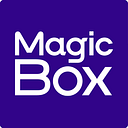Crafting Captivating Content: Essential Tools for Building Effective Digital Textbooks
The world of digital authoring platforms offers a treasure trove of tools to create engaging and effective learning experiences. For educators and content creators, navigating these options can be overwhelming. Here’s a breakdown of some essential tools to consider when crafting captivating digital textbooks:
Assessment Creation Tools: These tools allow educators to craft a variety of quizzes and assessments directly embedded within the textbook. This eliminates the need for separate worksheets or tests and allows for seamless integration of evaluation into the learning journey. Educators can choose from different question formats, such as multiple choice, true or false, matching, and open-ended questions, to cater to diverse learning styles and assess a deeper understanding of the material. These tools may also provide features for setting time limits, randomizing question order, and offering automatic grading with immediate feedback for students.
Simulation and Gamification Tools: Digital authoring platforms often offer tools to create simulations and gamified learning experiences. These tools go beyond static text and images, allowing students to apply their knowledge in a safe and engaging environment. Imagine creating a virtual lab experiment in a science textbook or designing a historical simulation in a social studies textbook. Students can practice skills, explore complex concepts, and receive immediate feedback within these interactive simulations.
Multimedia Integration Tools: Digital authoring platforms typically offer tools for seamlessly integrating multimedia resources such as videos, audio clips, and 3D models into the textbook. These tools enhance understanding and cater to diverse learning styles. Educators can leverage these tools to create a more dynamic and engaging learning experience for all students. Visual learners can benefit from captivating videos that illustrate complex processes, while auditory learners might appreciate audio recordings of key concepts or historical speeches. 3D models can provide an interactive and immersive way to explore scientific concepts or historical artifacts.
Additional Essential Tools:
The following tools are crucial for creating effective digital textbooks:
Accessibility Features: Look for platforms that offer features like text-to-speech functionality, dyslexia-friendly fonts, and multilingual support to ensure your digital textbook is accessible to all students. This promotes inclusivity and ensures all students have equal opportunity to learn.
Collaboration Tools: To facilitate a smooth development process, consider platforms with real-time collaboration features, version control, and access to community resources. Real-time collaboration allows educators and content creators to work together on the textbook simultaneously, streamlining the creative process. Version control helps track changes made over time and ensures a clear history of edits. Community resources can offer valuable support, best practices, and pre-made content or templates to save time and effort.
By utilizing these essential tools within digital authoring platforms, educators and content creators can craft captivating digital textbooks that leverage interactive features, promote accessibility, and foster a collaborative learning environment. This combination empowers students to thrive in the digital age and cultivate a love of learning.

